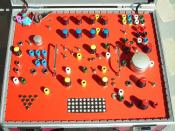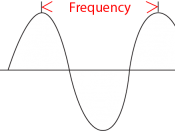Spectrograms
Because sound is a transitory phenomenon and only able to be perceived subjectively by listeners, experimental phoneticians have several methods of making the sound permanent by displaying it in visual form. This makes objective measurement of phenomena within the soundwave possible, and removes the possibility of subjective error while making auditory judgements.
The commonest visual display we have in experimental phonetics is called the sound spectrogram. The display takes the form of a graph on a computer screen; for a more permanent record this graph can be transferred to paper.
It is not necessary to understand the details of how the computer program transforms sound into a visual presentation to be able to understand what the graph is showing.
Basically the computer does the following:
i.divide the acoustic signal into slices or samples of quite brief duration (less than 10ms),
ii.examine the spectral content (what frequencies are present) of each slice independently, and
iii.display the resultant individual spectra in successive columns across the screen from left to right.
The amplitudes of frequencies within the spectra (the picture) are presented either with different colours or with varying shades of grey to indicate different levels of amplitude.
'How are you?' (this is what the picture is displaying)
Thus a complete picture is built up of the spectral content of the original soundwave.
On the graph the x-axis (horizontal) represents time, running from left to right; the y-axis (vertical) represents the frequencies of the spectral components the computer identifies; the different colours or levels of grey scale represent changing amplitudes of frequency component in the signal.
In general, the brighter the colour the greater the amplitude of that particuar frequency component. In the illustration yellow stands for the greatest amplitude sounds, shading through red, magenta, light blue and dark blue, through to...


